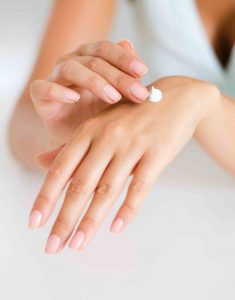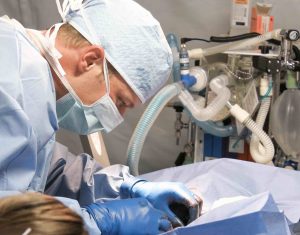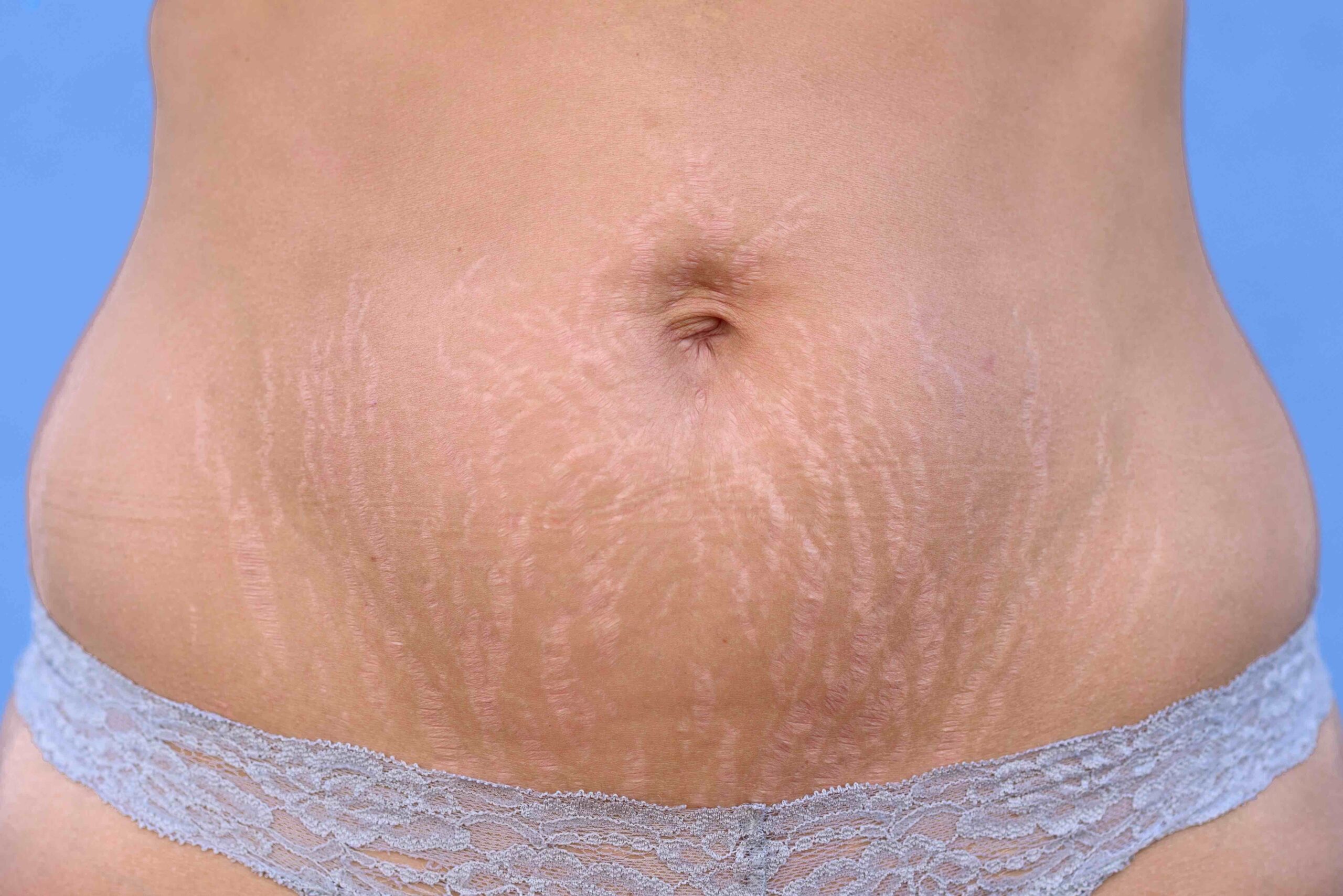What Are Stretch Marks?
Stretch marks form over the skin when stretched beyond its ability. The collagen deposits located deep in the tissues break apart and tear before healing. This results in the scar tissue you see as stretch marks.
At first, stretch marks look like a reddish-purple streak in the skin, ranging in length from barely noticeable to a few inches long.
The reason for this is the stretched skin is more transparent and the small blood vessels that lie deep underneath become more noticeable. After 6 – 12 months they will fade to a silvery white colour.
The stretch marks associated with pregnancy often appear on the breasts as they swell in preparation for milk production. They also form on the stomach as it gets larger with the growing baby. The reason for this is partly hormonal because during pregnancy the body produces hormones which help the body accommodate a growing baby.
Hormones soften the collagen in the ligaments of the pelvis so the area can stretch easily during childbirth. Unfortunately this process also affects the collagen in the skin making it much softer meaning stretch marks can form easier.
If you’re a new mom wanting to lose your pregnancy weight, go here to learn more – The Baby Belly Fat Loss Plan
Being pregnant also leads to extra fat storage and this can stretch the skin in other areas which is why you may also notice stretch marks on the bottom, hips, thighs and arms as well.
You are at a much greater risk of getting stretch marks if you gain weight rapidly during pregnancy or if you are expecting twins or a large baby.
Given that rapid weight gain during pregnancy is very common and almost unavoidable for most women. It’s understandable why the statistics for pregnant women suffering from them are so high.
Who Normally Gets Them?
Studies have shown that between 75% and 90% of women develop stretch marks during pregnancy to some degree. But not every pregnant mother will get them.
Experts suggest that some people get stretch marks because their bodies produce more of the hormone corticosteroid than normal. This hormone acts by reducing the amount of collagen in the skin. Corticosteroid is the substance in the fibres of the skin that keep it stretchy and flexible.

The people most often affected by stretch marks are…
Pregnant moms
Bodybuilders
Yo-yo dieters
Growing adolescents
There are a number of factors that seem to give some people a greater likelihood of suffering from stretch marks. These are family history, poor nutrition, lifestyle, pregnancy, and a rapid gain or loss of weight.
Hereditary reasons play a big role in whether or not you will suffer from stretch marks. If other members of your family have them then the chances are quite high that you might be susceptible too. It can depend on how elastic your skin is, and how quickly you grow, put on or lose weight.
Research seems to indicate that people with darker skins are much less likely to get stretch marks than those with paler skins.
Your overall health is an important factor too. It is important to drink plenty of water, follow a healthy balanced diet and exercise regularly, because healthy skin has a greater elasticity than dry or damaged skin.
Where do Stretch Marks Usually Appear
You can get stretch marks all over your body and they can appear anywhere. But they’re generally formed in places where fat is stored more readily. These are the abdomen (especially near the belly button), breasts, upper arms, thighs (both inner and outer), hips and buttock. They pose no health risk at all and do not affect the body’s ability to function normally.
How to Treat Stretch Marks
Once you have stretch marks, they’re are a permanent feature because areas that have been affected will never be completely normal. However, after a few months they do fade to a much less noticeable thinner, whitish scar.
Healthy Living
As with many aspects of health it is vitally important to maintain a normal weight. Gaining large amounts of weight or following strict starvation type diets can cause stretch marks to form. If you’re trying to lose weight, aim to do it slowly.

Most experts would agree that taking care of your body will help to maximize the effectiveness of whatever else you’re doing. Whether you’re using over the counter products, herbal supplements or even medicines,
Use these tips to treat or prevent the forming of stretch marks. Although stretch mark products will not work for everyone, following these guidelines will ensure you’ve given your skin and the treatment you choose the best chances of success.
- Eat a balanced diet to keep yourself and your skin as healthy as possible
- Take part in regular activity and exercise
- Avoid excessive alcohol consumption or smoking
- Take a multi vitamin every day, they cost just pennies each and may help to cover any deficiencies you might have.
- Reduce or limit the amount of caffeinated drinks you consume especially coffee
- Use a moisturiser every day
- Always use a sunscreen when exposed to the suns rays
Creams and Lotions
There is no conclusive evidence that regularly applying moisturising creams or lotions does have any effect on the appearance or the reduction of stretch marks. However many women claim the reason they didn’t suffer from them through pregnancy is due to this fact.

Massaging your skin everyday with a moisturiser or a massage glove can help to improve circulation, which encourages new skin growth. You should select creams that contain vitamin E, vitamin A or alpha hydroxy acids (AHAs). AHA’s contain plant extracts.
Though cocoa butter or olive oil are effective moisturisers, no research studies have shown their ability to either prevent stretch marks, or to reduce their appearance once a stretch mark has already formed.
Don’t buy a product because of false promises from the manufacturer. There are currently no tangible studies that show these creams can actually prevent stretch marks. There is some evidence that frequent use from early on can help to reduce the effects by keeping the skin supple, and the action of rubbing in the cream helps to improve circulation.
Fake tanning creams and lotions can help to camouflage stretch marks. But if you have a suntan, it won’t make them disappear because the marks aren’t pigmented. This means they won’t change colour when exposed to sunlight or tanning equipment like the rest of your skin does.
Prescription creams
After pregnancy there are some prescription creams you can use to help treat stretch marks. Normally these are only suitable after you have finished breastfeeding. Because there is little reliable proof of the amount that is passed through in to breast milk. This is why it’s best avoided while breast feeding. You should speak to your doctor for more advice.
Tretinoin/Retin-A
These creams are derived from vitamin A and you can usually only get these on prescription only. The effect they have is to increase collagen production in the dermis.
Here are some of the possible side effects associated with these creams…
- Stinging
- Swelling
- A redness in the skin.
- Your skin may become more sensitive to sunlight.
The skin may also get thicker because of the increase in the amount of collagen produced. People taking Retin-A should avoid taking vitamin A supplements at the same time.
Collagen creams
Manufacturers that produce this type of cream claim that they will improve the appearance of stretch marks. However there is no evidence that they do so. When you apply elastin and collagen, they can’t penetrate into the deeper layers.
When using creams to reduce stretch marks it is generally recommended that you continue their use for at least 6 months. Using over a shorter time frame isn’t really long enough to see results. But if you haven’t noticed any visible results in this time it is safe to assume that this product will not work for you.
Laser Treatment
Laser treatment can be very expensive but if you’re serious about reducing their appearance it could be worth trying. This type of treatment doesn’t strictly remove stretch marks, but it can help them to fade.
Laser treatment uses pulses of light which create microscopic tears to the scar. The body responds by producing new collagen and epithelium to repair the damage. This treatment only picks up the dark areas of skin, so it can only be used in the early stages. This is when stretch marks are their darkest and not in the later stages where they’ve started to fade.
A series of treatments are usually necessary to see visible results, but this would depend on your skin type and colour.
As with any cosmetic treatment you must check that the clinic is reputable. Check also that they have performed this type of procedure before and achieved good results. Your doctor may be able to advise you on some of the best places to go.
Plastic surgery

Surgery can also be very expensive, but it may be a possibility for removing stretch marks on the stomach, especially if you also have a lot of loose skin in that area. This operation is called abdominoplasty or a ‘tummy tuck.’ This involves removing skin and the fatty tissue underneath.
You may be left with scars around your belly button and across your lower stomach. This is not a minor operation and, like all operations, it carries risks with recovery potentially taking many weeks.
Summary
Most women will have taken especially good care of themselves during pregnancy for the sake of their growing baby. But few consider the same need for this afterwards. This is a big mistake as your body still needs as many quality nutrients and vitamins as possible to assist in the recovery and healing process.
The dramatic reduction in the size of your stomach and increased size of the breasts again makes your skin susceptible to stretch marks.
Prescription creams may be the most cost effective way to reduce the appearance of stretch marks but they won’t eliminate them altogether.
For anyone a little more desperate there are the options of laser treatment and abdominoplasty. These are both expensive and in the case of abdominoplasty quite a major operation with definite associated risks.
Whilst you may not be happy with the appearance of your stretch marks straight after giving birth, they will get better. Given time they’ll fade and become much less noticeable, causing you a lot less anxiety and worry.
By reducing your weight gradually through eating a well balanced diet, getting some regular gentle exercise and using a daily moisturising cream, you will start feeling much better about yourself and the issue of your stretch marks will become much less of a concern.
If you’re a new mom wanting to lose your pregnancy weight, go here to learn more – The Baby Belly Fat Loss Plan

